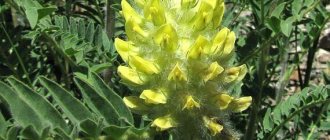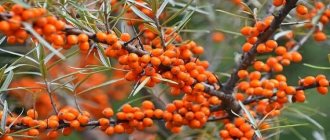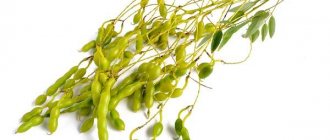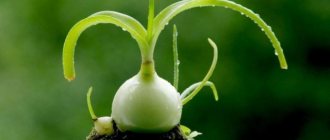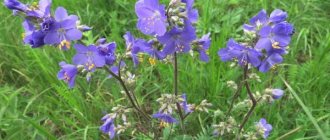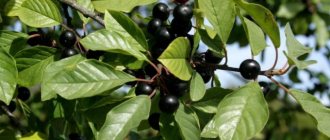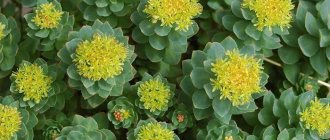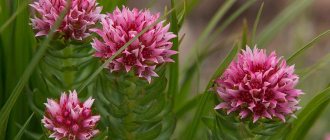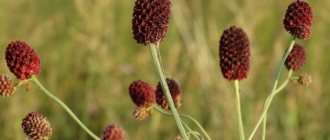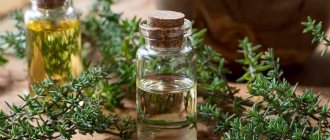Field horsetail (pusher, sucker, horsetail) is a perennial herbaceous plant, part of the Equisetaceae family. Distributed in subarctic, tropical and temperate regions, ranging from Iceland to Alaska.
In Russia and the post-Soviet countries it is found everywhere, with the exception of the northern parts and deserts. Prefers forests, floodplain meadows, bush thickets, river banks, sandbanks, fields, selects sandy or moderately moist soils. It also grows in the mountains, reaching the subalpine zone. It is considered a weed that is quite difficult to remove and can form entire thickets.
This delicate herringbone-shaped plant with a cone at the top is probably known to many people, but few people realize its beneficial properties. Traditional herbalists and pharmacologists have known the medicinal properties and contraindications of horsetail for a long time, which allows the use of plant preparations in medicine.
But the scope of application of the sosonka is not limited to this. Spring shoots are eaten both fresh and after heat treatment, added to sauces, pies, and casseroles. Considered a nutritious food for wild animals, but can cause poisoning in cattle and horses.
Horsetail - botanical description
The growth and development of horsetail occurs in two stages: with the onset of spring, erect, brownish shoots first appear, which end in a spore-bearing spikelet. The spores ripen in early summer. Tiny and light, they easily travel long distances with the help of the wind. As soon as their reproductive function is completed, the fruiting stems wither and are replaced by sterile stems, very branched and taller than the spring shoots of horsetail.
The height of the stems reaches 50 cm, they are separated by nodes, reminiscent of a pine branch. A blackish ring around each node breaks up the overall bright green coloration.
Vegetative shoots of horsetail are hollow, smooth, and are distinguished by the presence of nodes on which there are serrated sheaths (reduced leaves). They are formed by reduced leaves fused together, which do not photosynthesize and grow in whorls of 6–12.
The horsetail leaf is modified and is absent as an independent organ.
The branches are hard and rough to the touch. The rough texture is due to the presence of large amounts of silica in the plant.
The horsetail root consists of deep-lying creeping branches with black tubers on them. Tubers serve as a reproductive organ and store a supply of essential nutrients. It is this reserve that allows horsetail to “colonize” new lands, growing aggressively. It is extremely difficult to eradicate it. Therefore, horsetail in the garden is a “headache” for summer residents.
Description of the plant
Horsetail is a herbaceous perennial with a creeping root, reaching almost half a meter in height. Prefers well-moistened acidic soils, where it readily grows into real thickets.
In spring, the plant is a leafless brown stem with a spikelet at the top, and in summer it is already a pretty green grass, very similar to a miniature Christmas tree. Only the branches of the horsetail are narrow and hollow and point upward.
Horsetail is quite hard to the touch. The plant is poisonous, but despite this, it is successfully used in both traditional and folk medicine to treat various diseases.
Types of horsetail
Horsetail has more than 20 species:
Riverside horsetail (Equisetum fluviatile)
Perennial, grows along the banks of stagnant bodies of water. The stems are not branched or weakly branched, soft, hollow, ribbed. Leaf whorls are cylindrical. The main axis and lateral branches end in a spikelet. Contains small amounts of nicotine, palustrin and aconitic acid.
Horsetail (Equisetum palustre)
Habitat: swamps, meadows, swampy forests. Angular-furrowed stems reach 40 cm. The branches are unequal, arched inward. Contains palustrin, nicotine, equisetonin, flavonoids, silica (10%).
Horsetail (Equisetum pratense)
Sporiferous and vegetative shoots develop simultaneously. After sporulation, the stem does not die, but turns green and develops lateral branches. The branches are simple, horizontal or drooping, up to 8 cm long. There are no branches in the lower part of the stem.
Horsetail (Equisetum sylvaticum)
The height of the perennial is 25-60 cm. Habitat is clearings, forests, often coniferous. The sheaths are bell-shaped, with reddish teeth. The complex structure of horsetail branches gives the plant an “openwork” appearance.
Wintering horsetail (Equisetum hyemale)
Shallow, coastal, evergreen crop. Forms bunches of hard, thick shoots with a sharp spikelet.
An interesting property of horsetail is the absorption of minerals contained in the soil, including gold, by concentrating them in its tissues.
Varieties
The genus Horsetail includes more than 20 species of herbaceous plants. The most common of them:
- riverine horsetail (lat. Equisetum fluviatile);
- horsetail (lat. Equisetum telmateia);
- wintering horsetail (lat. Equisetum hyemale);
- horsetail or field horsetail (lat. Equisetum arvense);
- horsetail (lat. Equisetum palustre);
- branched horsetail (lat. Equisetum ramosissimum);
- horsetail (lat. Equisetum pratense);
- reed horsetail (lat. Equisetum scirpoides);
- horsetail (lat. Equisetum sylvaticum).
What to remember
- Horsetail contains organic and fatty acids, vitamins, flavonoids, glycosides, and pectins.
- Plant-based products have anti-inflammatory, restorative, diuretic, disinfectant and regenerating effects.
- Herbal preparations are used to treat diseases of the respiratory tract, cardiovascular, nervous and genitourinary systems.
Source
Other useful and medicinal plants
Instructions for using birch tar, benefits and harms
Gymnema - beneficial properties, contraindications, how to take
Marsh cinquefoil - application, beneficial properties, contraindications
The benefits and harms of pine cones, properties and when is the best time to collect
Chemical composition of horsetail
Horsetail contains some extremely rare minerals and unique organic compounds. Its chemical composition is rich and varied:
- alkaloids (nicotine, palustrine, dimethylsulfone);
- silicic acid (up to 25%);
- flavonoids (luteolin, apigenin, quercetin);
- vitamins, minerals, trace elements;
- essential oils;
- organic acids (malic, oxalic, aconitic);
- saponin (equisetonin);
- resin, bitterness.
Medicinal properties of horsetail
The medicinal properties of horsetail are based on the presence of silica and antioxidant compounds in its composition. They act both alone and together to achieve the greatest effect in treatment.
Horsetail is a well-known diuretic plant that can increase urine secretion by 30%. This makes it ideal for those suffering from arthritis and gout, as well as kidney, bladder and kidney stone problems.
Medicine is known for its anti-inflammatory, cleansing, tonic, astringent, antiseptic, diuretic, anthelmintic, antimicrobial and hemostatic properties.
Rheumatoid arthritis, osteoporosis
Rich in silica and mineral salts, horsetail has a reputation as a bone and connective tissue remineralizer. Silica deficiency precedes calcium loss, which causes our bones to become brittle. Silica is of paramount importance for our connective tissues - cartilage, muscles and skin. The combination of silica, mineral salts and equisetonin provides the antirheumatic effect of horsetail.
Analgesic and anti-inflammatory compounds neutralize the symptoms of arthritis.
Wounds and burns
Horsetail preparations accelerate wound healing and regeneration of damaged tissue. Silica helps seal the wound, and flavonoids prevent infection.
Decreased immunity
The antibacterial and antiseptic properties of horsetail can protect against foreign pathogens and substances that can compromise our immune system.
Cold, cough
If you suffer from respiratory problems and frequent colds, horsetail tea may be a great solution. Acting as an expectorant, it removes mucus and phlegm where bacteria can settle and grow, while also strengthening the immune system and reducing inflammation.
Enuresis, cystitis
Horsetail increases the tone of the bladder walls, making them less permeable to bacteria. It would seem that an herb that increases the need to urinate would aggravate it, when in fact the healing, strengthening and tonic effects of horsetail actually improve the condition. The British Directory of Herbal Medicines of the last century (Potter's Cyclopedia, 1915) recommends horsetail for cystitis, urethritis and prostatitis.
Diabetes
Horsetail has antidiabetic properties. Studies on rats confirmed the hypoglycemic effect of the extract. Weight loss in diabetes has also been observed to stop.
Atherosclerosis
Silicon affects lipid metabolism. Therefore, horsetail prevents the formation of fatty deposits in the arteries. Europeans have been using horsetail for the treatment of atherosclerosis for many years.
Many people use horsetail for weight loss. But there is no clinical data confirming its effectiveness in the fight against excess weight.
Dementia, poor memory, insomnia
The effects of horsetail on the brain are just beginning to be discovered medically. Its complex antioxidant composition may protect the brain and improve cognitive function. In old age, antioxidant defenses weaken, which can cause dementia, Alzheimer's disease and Parkinson's disease. Powerful flavonoid antioxidants in horsetail (isoquercetin) enhance cognitive function and improve memory, increasing sleep duration in people suffering from insomnia. The flavonoid isoquercetin acts as a mild and safe sedative.
Asthma
Histamine narrows the airways in asthma, causing difficulty breathing and mucus buildup. Horsetail extract blocks the action of histamine and relaxes the respiratory tract.
Horsetail is an effective natural diuretic.
In modern medicine, any diuretic is supplemented with potassium to replenish the loss of potassium in the urine. Horsetail, however, has its own built-in way of helping the body maintain potassium levels. In a normal diet, the ratio of potassium to sodium is about 2:1, but in horsetail it is 150:1, meaning that any potassium lost due to its diuretic effect is replaced naturally.
Contraindications to treatment and precautions
The contraindications are as follows:
- Nephritis and nephrosis;
- Heavy internal bleeding;
- Pregnancy (causes uterine contractions);
- Lactation;
- Children under 3 years of age;
- Individual intolerance.
You cannot take medications from this plant for more than 3 months in a row. It contains the enzyme thiaminase, which breaks down vitamin B1, so the use of horsetail preparations for more than 3 months leads to the development of a deficiency of this vitamin. The potassium content in the blood also decreases, which, coupled with a pronounced diuretic effect, leads to hypokalemia, so this indicator should be monitored during treatment. Incompatible with lithium drugs - it slows down their natural elimination from the body, which is fraught with the development of side effects.
The use of horsetail must be agreed with the attending physician - only this is a guarantee of safe and effective treatment.
Possible harm and contraindications
Not everyone can use horsetail for weight loss. There are a number of absolute contraindications, in the presence of which the plant should be excluded from the diet:
- inflammatory processes in the kidneys, including nephritis, nephrosis;
- the use of medications aimed at reducing blood pressure or urine excretion;
- the period of bearing and feeding a child;
- uterine bleeding resulting from termination of pregnancy;
- childhood.
Indications and contraindications for the use of horsetail for weight loss
The medical community generally has a positive attitude towards the use of horsetail for weight loss and treatment. But doctors warn that independent use of this plant without prior consultation with a specialist can lead to complications such as:
- dehydration of the body;
- the occurrence of allergies;
- formation of salt stones in the kidneys.
To ensure that horsetail has only a beneficial effect, it is better to first talk to your doctor. He determines the individual dose. After all, if you abuse the plant, you can get poisoned, as it contains toxic substances.
Watch the video about the beneficial properties of horsetail:
Horsetail decoction causes the following side effects
Horsetail is an herb that has been used as a traditional remedy for a long time. It has a lot of advantages, but it is still worth taking some precautions.
Limit consumption of horsetail tea for a short period of time. Taking it for too long will definitely cause kidney irritation.
Due to its diuretic effect, tea helps reduce potassium levels. Moreover, this happens at a faster rate than the actual entry of this element into the body. As a result, you may experience muscle weakness and irregular heartbeat. Be sure to check your potassium levels and adjust your diet accordingly.
A decoction of horsetail in large doses can cause a deficiency of vitamin B1 (thiamine). You may need to find additional sources of this vitamin. Otherwise, you will experience a loss of strength and coordination. It is especially dangerous to drink alcohol with such herbal tea at the same time.
For topical use of the decoction, you need to test for allergies on a small area of the skin. If you experience skin irritation or rash, stop using it.
One of the elements present in horsetail is nicotine. Therefore, taking this tea in large quantities may lead to toxicity-like symptoms. These include nausea, muscle weakness, fever and even irregular heartbeat.
The same applies to taking lithium supplements. Horsetail decoction can affect the removal of lithium from the body.
Use of horsetail during pregnancy
If you are pregnant or breastfeeding, it is better to find an alternative solution. Horsetail tea contains small amounts of nicotine. It is highly discouraged at this stage of your life.
Likewise, horsetail decoction is not safe for children. Traces of nicotine make it unsuitable for very young children. For the same reason, horsetail tea should not be taken while breastfeeding. At best, it will make your milk less flavorful to your baby. And at worst, it can even cause harm.
Pharmaceutical preparations based on horsetail
Horsetail is sold in pharmacies in the form of crushed raw materials or filter bags.
The pharmaceutical industry produces dry and liquid extracts of horsetail herb.
It is present in the drug “Traskova Anti-Asthmatic Medicine”.
Horsetail is one of the active substances of the diuretic "Fitolysin" - a paste for preparing a suspension.
Horsetail grass is a component of various herbal preparations: kidney, heart; balms for joints; phyto shampoos, medicinal sprays to strengthen hair.
For ease of use, horsetail is available in capsules.
Features
Horsetail is a perennial. Height – up to 60 cm. The plant is spore-bearing.
The rhizome is 5-7 m long, creeping, penetrating to a depth of 1 m.
Horsetail has two types of stems: spring and summer. In early spring, spore-bearing brownish succulent shoots up to 15-20 cm in height appear, in the upper part of which there is a spikelet with spores.
The spores are green and spherical. When they mature, these stems die and are replaced by barren summer stems. Summer stems are branched, branches are arranged in groups of 8-16 pieces.
The stems and branches are hard and rough due to the presence of silicic acid crystals in them.
Horsetail spores in April-May. Reproduces by spores and segments of rhizomes.
The use of horsetail in folk medicine
The use of horsetail in traditional medicine has a long history. The preparations are decoction, infusion, tincture, tea, ointment, powder and even plant juice.
Horsetail decoction
- 4 tbsp. spoons of dry grass;
- 1.5 liters of cold water.
Pour water over the raw materials and put on fire. Bring to a boil, simmer for 5-7 minutes, remove from heat. Cool, strain.
A decoction of horsetail is used for compresses, baths for sweaty feet, hemorrhoids, for the treatment of wounds, skin problems, and hair washing.
Horsetail infusion
- 2 tbsp. spoons of dry grass;
- 200 ml hot water.
Place in a water bath and heat for 20 minutes. Remove from heat, cool, strain.
The infusion will help with diabetes, atherosclerosis, and is good for the liver. Dosage – half a glass three times a day 15 minutes before meals.
Alcohol tincture of horsetail
Horsetail tincture is prepared from herbs and alcohol.
Pour 100 g of raw material into 500 ml of vodka. Seal tightly and leave in a dark place for 10 days. After this period, pour the tincture into a dark glass container and store in a cool place.
Externally, the tincture can be used to strengthen nails and hair. Orally - for uterine bleeding, to improve heart function, remove toxic substances from the body.
Take 1 teaspoon per 0.3 glass of water 2-3 times a day.
Horsetail tea
Pour 1 teaspoon with 1 glass of boiling water, leave for 15 minutes, strain and drink warm. If desired, this tea can be sweetened with honey or a small amount of sugar.
Tea will provide quick relief for headaches, fatigue, cystitis, and colds.
Horsetail ointment
2 tbsp. Grind tablespoons of dry herbs in a blender until powdered. Mix with Vaseline or some neutral cream.
The ointment is suitable for the treatment of wounds, acne, bruises, abrasions.
How to drink for weight loss
For weight loss, horsetail can be used in various forms. But it should be remembered that infusions, decoctions and teas based on this plant can only be taken for 2-3 weeks. This is due to the fact that horsetail quickly removes fluid, and if consumed uncontrolled, this can lead to dehydration.
Therefore, after 3 weeks you should take a short break. You can repeat the course in a couple of months. Then you will be able to maintain good health and well-being.
But during the course, which lasts no more than one month, you need to drink infusions and decoctions of horsetail for weight loss every day. Only then will you be able to lose a few extra pounds.
Traditional medicine recipes
In traditional medicine recipes, horsetail acts in combination with other herbs.
Inflammatory diseases of the kidneys and urinary tract
- 1 tbsp. a spoonful of horsetail;
- 1 tbsp. spoon of birch leaves;
- 2 cups (400 ml) boiling water.
Mix herbs and pour boiling water. Leave in a sealed container until completely cooled. Strain and drink half a glass 3 times a day before meals.
Gallstones
- 1 teaspoon horsetail;
- 1 teaspoon of wormwood;
- 1 cup boiling water.
Pour boiling water over the herbs, leave in a water bath for 10 minutes, remove from heat, and cool. You need to drink horsetail one glass half an hour before meals in the morning and evening. The course of treatment is 7 days. After a 10-day break, the course can be repeated.
Enuresis
Brew 1 teaspoon of horsetail with boiling water in a small cup (150 ml). Let it brew and drink warm 15 minutes before meals 3 times a day. Course – 7 days.
On a note. It is better to brew horsetail not with boiling water, but with hot water.
Features of the use of horsetail for women, men and children
The beneficial properties of horsetail are used in the treatment of purely male or female diseases. Horsetail is a very valuable plant for women.
- The hemostatic activity of horsetail components is effective for the treatment of heavy and painful periods.
- Silica is needed for the formation of collagen, which forms the basis of the connective tissue of the body and ensures its strength and elasticity. Cosmetologists recommend using horsetail on the face.
- A cup of horsetail tea is a good prevention of osteoporosis, which often affects women during menopause.
Horsetail is useful for men as a possible treatment for benign enlarged prostate gland. It relieves swelling and cleanses the prostate.
Children may take horsetail preparations for bedwetting or diarrhea.
Horsetail for adenoids, judging by the reviews, shows good results. For treatment, you need to instill an aqueous infusion of the herb into the child’s nose - 5 drops in each nostril three times a day. As improvement occurs, the dosage can be reduced to twice, then once a day.
Sebastian Kneipp (German healer, priest, 19th century) recommends that everyone over 40 years old drink a cup of horsetail tea every day. Tea maintains the elasticity of blood vessels and strengthens memory.
Indications for use
It is advisable to use horsetail in case of such diseases:
- Pathologies of the bronchopulmonary system. Used to treat bronchitis, tuberculosis, pneumonia, adenoids and asthma. Relieves cough, relieves inflammation and eliminates swelling of the ligaments, which relieves hoarseness.
- Diseases of the blood and cardiovascular system. Clears blood vessels of atherosclerotic plaques and increases their tone, which helps reduce blood pressure and improve blood circulation. Has the ability to stop bleeding.
- Diseases of the digestive system. Horsetail is used to treat helminthic infestations and diarrhea caused by infections. The plant is used for poisoning, benign tumors of the stomach and liver. Used in the treatment of pancreatitis, duodenal ulcers and cholelithiasis.
- Helps remove stones and sand from the kidneys and prevents their appearance. Eliminates infections in the urinary system, which makes it useful for the treatment of cystitis and pyelonephritis. Stimulates urine excretion and relieves cardiac and renal edema.
- Horsetail is also used externally to wash the eyes for conjunctivitis or gargle and gargle. Used in the form of compresses and baths for joint diseases and sciatica. It is used to treat hemorrhoids, varicose veins, lichen and eczema, treat ulcers, wounds and purulent pimples.
We recommend reading: Corn silk: benefits and harms, methods of use
Horsetail cleanses the blood and removes toxins and waste, lowers sugar and normalizes metabolic processes, so it is useful to use it for the treatment of diabetes, as well as for weight loss.
Application in cosmetology
Silicon creates a bond between protein molecules that are responsible for the skin's natural ability to retain water, which is extremely important for cell restoration and renewal. It is a natural anti-inflammatory agent that treats skin diseases such as eczema, psoriasis, and atopic dermatitis.
To restore aging skin
Pour 1 cup of dry horsetail herb into 1 liter of hot water and boil for 20 minutes. Strain, cool and wash with this decoction several times a day. You can freeze the broth and wipe your face with ice cubes.
Nourishing and rejuvenating mask
Add 1 tablespoon of honey and 1 teaspoon of grape or apple cider vinegar to a glass of warm broth. Stir until the honey dissolves. Soak a cloth in the broth, apply it to your face and hold for 15 minutes.
Horsetail for hair
This is a good product recognized by the beauty industry. Scientific studies have proven that hair loss goes hand in hand with low silicon levels. It is thanks to silicon that horsetail stimulates hair growth, increasing its strength and thickness.
It is present in the composition of medicinal hair balm. Used to treat baldness and alopecia.
At home, you can rinse your hair with a strong decoction of horsetail.
Collection and procurement of raw materials
The beginning of summer is the time to collect grass. Green shoots stretched out and absorbed useful substances. It is imperative to make sure that the grass being harvested is horsetail and not its other species. Horsetail is collected in dry weather. In the morning, when the dew has disappeared, you can cut off the green shoots. The cut should be 5-6 cm above the soil surface.
You need to dry it in the shade or in a well-ventilated area, spreading the grass on a “breathable” surface. It is not recommended to wash the grass before drying.
Drying lasts 7-10 days. Dry, brittle horsetail stems are stored in a paper bag or linen bag.
Contraindications
In order not to harm the body, you must follow all safety measures.
- Allergies and individual intolerance are reasons to avoid horsetail.
- Horsetail is not recommended during pregnancy and breastfeeding.
- Diabetes (hypoglycemia) with low sugar levels - horsetail can reduce sugar to a critical level.
- Nephrosis, nephritis. Horsetail is one of the undesirable herbs for these diseases.
Treatment with horsetail should be started after consultation with a doctor.
Video on the topic
How to use horsetail for treatment? The instructions are in front of you:
This article describes all the positive aspects of horsetail, which is actively used not only in medicine, but also in cosmetology. Despite the fact that the plant is used mainly only in alternative medicine, modern specialists prescribe it to their patients both for preventive purposes and for the treatment of certain diseases. You should not self-medicate, since if you have certain diseases and conditions, taking this herb can harm the entire body.
